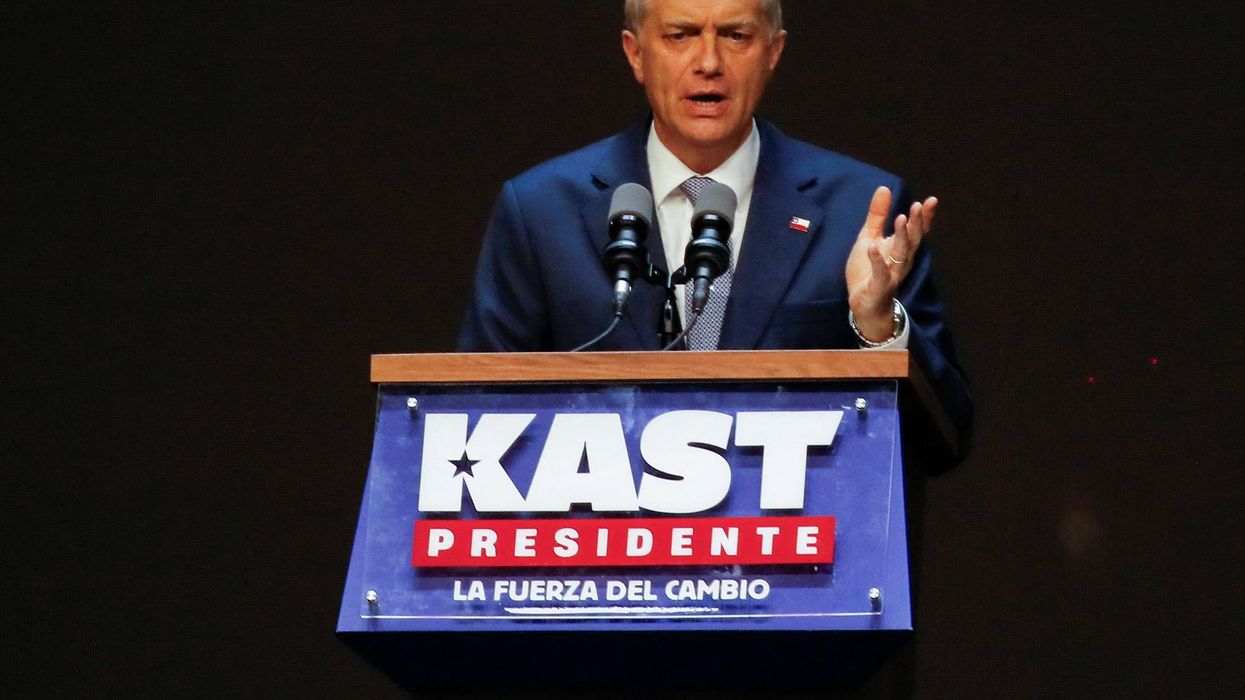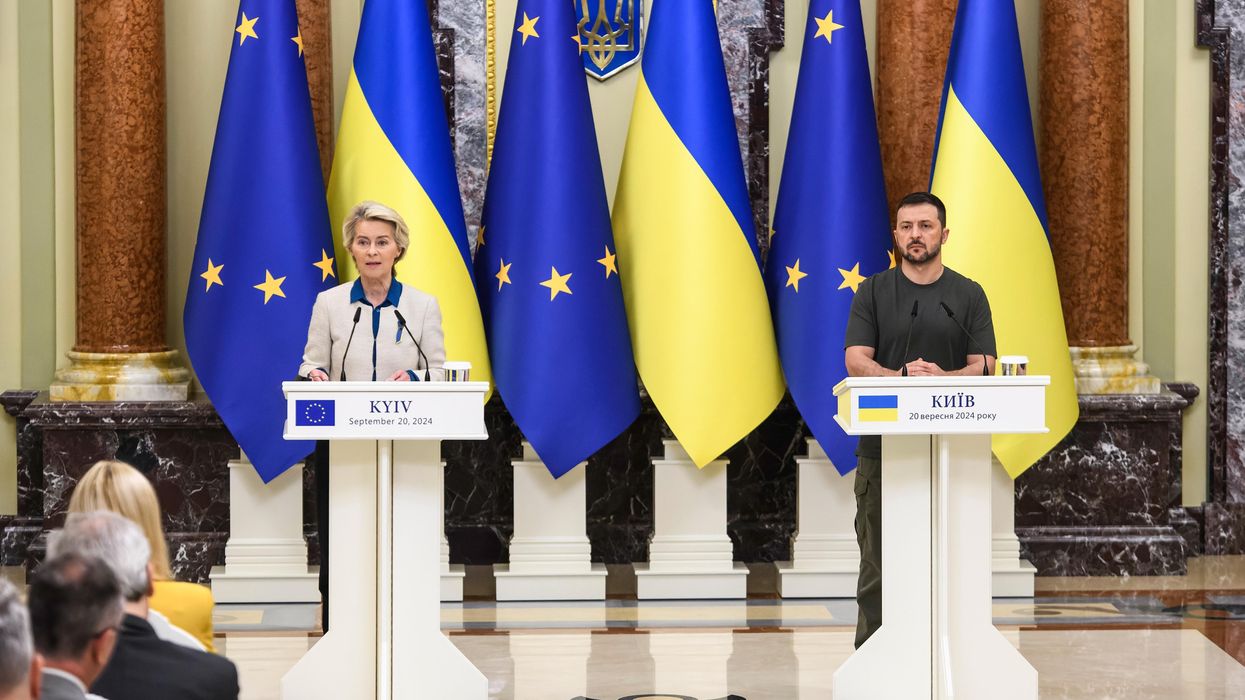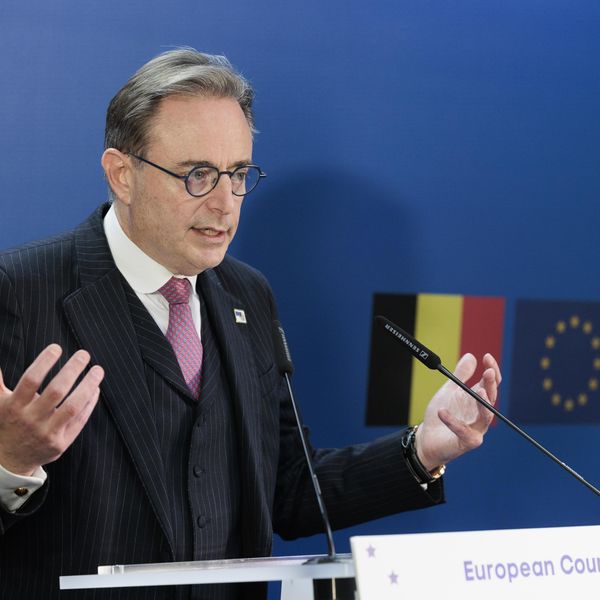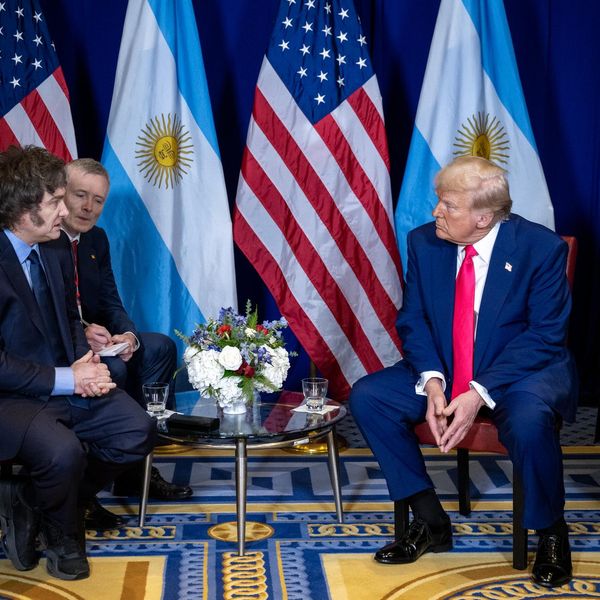Saudi Arabia’s announcement last month of surprise oil production cuts reverberated around the world. The cuts consisted of a voluntary reduction of 500,000 barrels per day, made in coordination with both OPEC and non-OPEC oil-producing countries (including Russia), with the total cut reaching more than 1 million barrels per day, or roughly 1 percent of global production. President Joe Biden was quick to dismiss the announcement, claiming that while he considered the decision unwise given current market uncertainty, the result is “not going to be as bad as you think.”
The global outlook remains decidedly uncertain as the US and other economies teeter on the edge of recession, with the continued menace of food and energy insecurity and the threat of high energy prices looming, especially as geopolitical conflicts endure. Only one day after the announcement, Brent Crude rose sharply by about 6 percent to reach nearly $85 a barrel. At a time when the Federal Reserve is scrambling to tame inflation, which is running at multi-decade highs, there is a good chance that this could help push the US into recession.
However, with demand sinking, oil prices have since stabilized at around $75 a barrel. As such, Saudi Arabia’s defiant move is a signal to the US of the bullish approach that the kingdom will be adopting to chart its own energy and foreign policies—and this while shoring up global alliances with Russia and China and developing regional partnerships with old rivals like Israel, Syria, Turkey, and even Iran to enhance regional stability and prosperity. Indeed, without firm guarantees that the United States will come to the kingdom’s defense when needed, Riyadh is clearly set to pursue a different energy and national security strategy than Washington would like as it positions itself as a regional power, one that is clearly driven by its own self-interest.
What is Behind the Production Cuts?
OPEC released a statement describing these voluntary adjustments as “a precautionary measure aimed at supporting the stability of the oil market.” The Saudis insisted that the decision was based on global market forecasts and an uncertain energy outlook, and they have repeatedly—though superficially—pointed to oil prices continuing to trade at under $80 a barrel as proof that the decision would not send prices soaring.
Global oil demand is expected to grow by the end of 2023 due to rebounding jet fuel use and expected demand by China, which is why oil prices were initially anticipated to spike again with these production cuts, ensuring in the process that OPEC revenues would swell. Saudi Arabia acutely needs revenues from oil to implement its ambitious internal reform agenda: Vision 2030—the kingdom’s strategic framework to reduce dependence on oil, diversify its economy, and create employment opportunities for its citizens—which requires an investment of $3.2 trillion. Right now, the country’s sovereign wealth fund is fueling the ambitions behind the initiative to stimulate investment and access to new technologies and develop local industries, among other aims. But with worries over a slowing global economic outlook, and with China’s sluggish economic growth, the production cuts failed to make crude prices rebound.
Despite the potential benefits to Saudi Arabia, the initiative to boost prices may still have had less to do with higher revenue generation and more to do with the kingdom’s changing internal needs and geostrategic positioning. Newly determined to regain its position as a decisive force shaping oil prices, Saudi Arabia is hedging its bets and currying favor with China, Russia, and its Gulf neighbors in order to protect its interests.
The Fractured US-Saudi Relationship
The Saudi-US relationship was founded on an “energy for security” rationale. Traditionally the main security guarantor in the Gulf, the US has spent billions of dollars on military and security aid, with the kingdom delivering low-cost energy supplies in return. This long-standing partnership between the two countries had for decades remained stable, even if transactional, and rooted less in the shared values of liberalism than in common geostrategic interests, namely maintaining peace and stability in the region. But the US retrenchment from the region in recent years has raised questions about the steadfastness of its commitment and its willingness to safeguard Gulf security interests. This came to the fore when the United States did nothing in response to audacious Iranian drone attacks on Saudi oil facilities in 2019 that immediately escalated tensions in the Gulf. Fractures in the relationship had already deepened during the Obama administration, with both the Gulf Cooperation Council’s (GCC) exclusion from negotiations with Iran that culminated in the 2015 nuclear deal, and also the worry that with the snapback of sanctions against the Islamic Republic the deal would not be used to improve the economic lot of Iranians but to fuel Iran’s adventurism in the region and its support for proxies and destabilizing activities.
The targeting in 2019, then again in 2022 by Yemen’s Iran-allied Houthi forces, of Aramco oil facilities—Saudi Arabia’s crown jewel, which processes the bulk of oil production—struck at the core of the kingdom’s economy, heightening concerns about the threat to critical infrastructure and subjecting Riyadh to a test it could not pass. The production of some 5.7 million barrels a day was suspended (well over half of the nation’s overall daily output and over 6 percent of the global oil supply), thereby exposing Saudi vulnerabilities, despite its significant capacities and extensive spending on military equipment. Beyond condemning the attacks and talking about the need to de-escalate, then President Donald Trump suggested at the time that the ultimate responsibility in dealing with the attacks rested with Saudi Arabia, drawing a distinction between the two countries’ interests. Rather than retaliating against Iran, Trump’s response—which was the deployment of an additional 3,000 US troops to the Gulf—sent shockwaves through Saudi Arabia, signaling a lack of resolve that fed frustrations and concerns in Riyadh about Washington’s long-term commitment. The United States’ additional disinclination to support Saudi interests against Iran proxies in Yemen and Syria further undermined Saudi perceptions of Washington as a reliable security guarantor. Consequently, mistrust settled in, notwithstanding continued arms sales, joint military exercises, and the US military presence in the region.
The subsequent China-brokered détente and restoration of relations between Riyadh and Tehran in March 2023 after years of proxy battles, diplomatic discord, and a regional “cold war” was arguably the embodiment of Saudi Arabia moving away from its sole dependence on the United States. And December 2022 found Chinese President Xi Jinping in Riyadh signing 34 investment agreements across multiple sectors, including green energy, cloud services, and information technology. Since then, Saudi Arabia has been making moves—like the recent oil production cuts—that it decided are in its self-interest, even if they are at odds with the United States, establishing that if the US does not serve its interests, the kingdom will not be bound by the partnership. And while the reduction of tensions with Tehran in the short term may not end Saudi Arabia’s concerns over its defense, it will help the country buy itself time to broaden its strategic and military options, hence the nurturing of China as one such ally.
From the Saudi perspective, diversifying bets and partnerships to include not just the United States but also China and Israel (it was recently revealed that the kingdom is allegedly open to normalizing relations with Israel in return for firm security guarantees and nuclear aid), and reducing tensions through more direct communications with foes like Iran (with whom Saudi Arabia has often battled through proxies) will de-escalate tensions and diminish the potential for instability in the longer term. The restoration of relations with Syria, propelled to a degree by the resumption of ties with Iran, will further allow the kingdom to position itself as the leader of Arab concord, and will reinforce attempts to restore regional stability, which is especially critical in ensuring international buy-in for Vision 2030’s megaprojects, which are seen as the kingdom’s engine of long-term growth and prosperity.
In a quintessentially pragmatic move, Saudi Arabia’s crown prince, Mohammed bin Salman, is consequently seeking to adapt to a post-US Gulf region by gathering a wider net of partners and patrons through which Saudi Arabia can play a decisive role in the region. The decision by OPEC and other oil-producing allies likewise underscores the extent to which the Biden administration has lost its ability to influence Saudi Arabia—something that is evidently not apparent in Washington—signifying the demise of the old “security-for-oil” paradigm and the emergence of one in which the kingdom is positioning itself as a force with its own strategic ambitions, independent of the United States.
China’s Growing Footprint in the Gulf
Saudi relations with Washington have been further complicated by China’s expanding economic and diplomatic footprint in the region. Comprehensive partnerships are already in place with Iran, Saudi Arabia, the UAE, Algeria, Egypt, and others replacing Washington’s role as the region’s biggest investor and leading GCC trade partner (and as Saudi Arabia’s largest trade partner). Between 2005 and 2022, Chinese investments in the region totaled $273 billion, with 46 percent in the energy sector. Saudi Arabia’s ongoing large-scale modernization is also heavily reliant on Chinese financing and support, even more so in the wake of the Ukraine war, which has introduced systemic pressures on Gulf economies, such as increased energy volatility due to sanctions on Russia. Indeed, at the core of this relationship is energy, as China imports half of its oil supplies from the region, mostly from Saudi Arabia and Iran, rendering it vital for its energy security. Therefore, while China is seeking new investment markets for its export surplus capital and industrial capacity, it will be incentivized to secure, as part of its Belt and Road Initiative, critical energy resources and trade routes, including a transit corridor through Iran. But China also needs to ensure that with its expanding trajectories, its investments are safe from regional attacks and conflicts.
Here, in addition to the appeal of trade and investment with China, Beijing’s development-first, non-interventionist, and paternalistic model of governance resonates with Gulf states, as does the potential inclusion of Saudi Arabia and Iran in the BRICS group of countries as a counterweight to western-dominated institutions (a potential development that is currently being discussed). China has seemingly positioned itself as an equal to the Gulf monarchies, in stark contrast to Washington’s perceived instrumentalism—and this, a testament to a shared vision of a multipolar world, is less the result of proactive Chinese hegemonic ambitions than of the “pull” character of these engagements. Indeed, the Chinese model of authoritarian developmentalism may be a mechanism for political and economic engagement popular with Gulf political elites, with China having proven that by prioritizing economic growth over political reform, ruling classes can retain control through a renewed basis for legitimacy while reshaping their country’s economic character. This is especially alluring to GCC regimes, which are particularly wary of the implications of political liberalization but are enticed by opportunities to diversify economies and attract foreign direct investment created by cooperation with Beijing.
Saudi First
After years of acting as a global manager of oil markets under US tutelage and being concerned with the strength and well-being of the global economy, Riyadh’s posture now is clearly a “Saudi-first” approach with implications for domestic and international policy, including the diversification of the country’s diplomatic partners beyond just the United States. As such, it is likely to form the foundation of a new geopolitical reality, one that marks the coupling of non-US and Gulf interests, especially as China’s global influence grows and the US turns its focus to Asia and Europe. Accordingly, the recent decision to slash oil production, beyond merely reinforcing Russia’s standing at a time when the West is trying to sanction it, underscores the end of Saudi Arabia’s mostly monogamous relationship with the United States and the emergence of a new alignment of interests, plus the potential of long-term alliances between Riyadh, Beijing, Moscow, and Tehran. The production cuts are undeniably the first step in a series of actions that will strengthen Saudi Arabia’s regional standing, and any ensuing reexamination of US policy in the region will need to carefully weigh the true motivations behind and implications of this realignment.
This article has been republished with permission from Arab Center Washington DC.
















